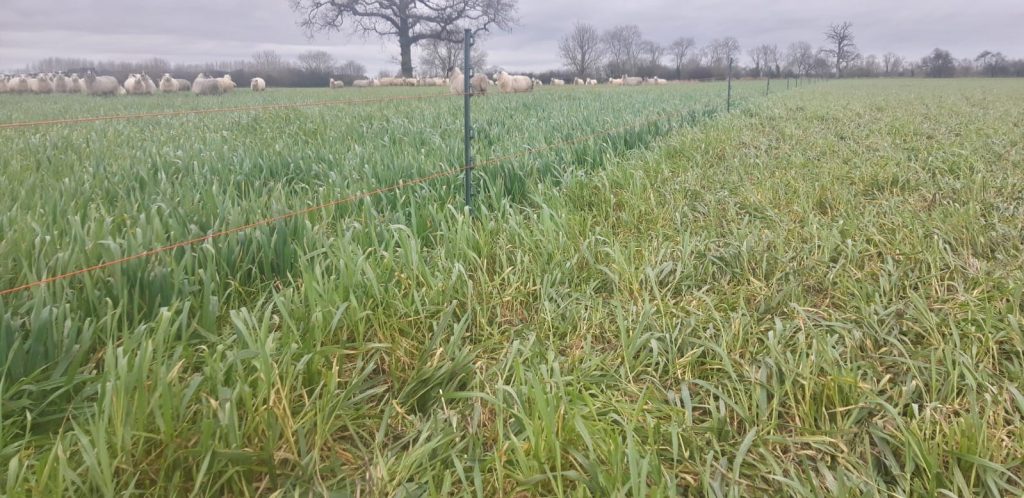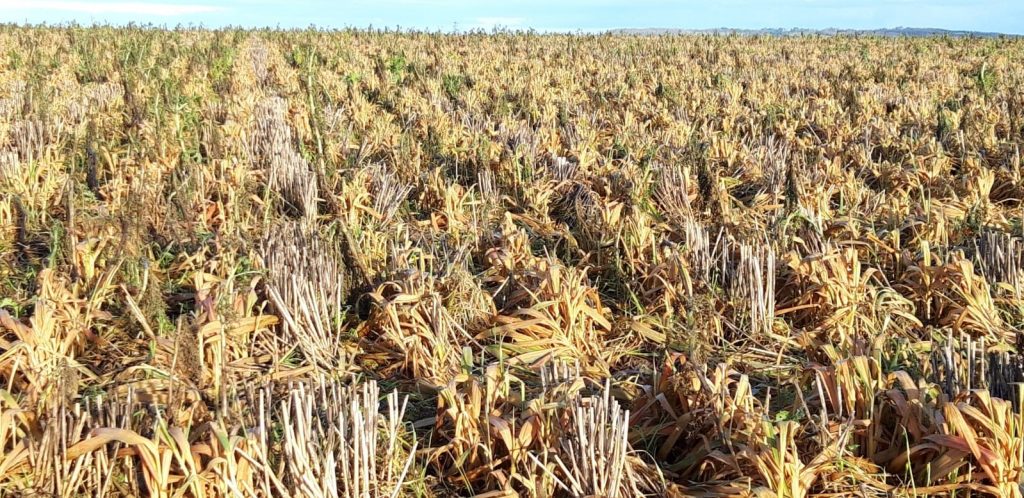Our cover crops which are sown straight behind the combine into chopped wheat residue, once again hit the ground running, with strong plants producing significant biomass and importantly ground cover. Cover crops are an important part of our cropping system, bringing a multitude of benefits both long term and short term. Particularly in a wet season such as we’ve had, the ability to maintain the superb condition of our topsoil is a priority. The growing cover acts as an umbrella, slowing the impact of rainfall, along with maintaining soil structure and stability through living roots – mitigating erosion and leaching.
One of the key elements of managing cover crops is their termination, so as not to be detrimental to the subsequent spring crop. With large biomass covers, they offer shading to target weeds, often requiring to two passes of glyphosate to achieve the clean start required. Keen to maintain the efficacy of glyphosate, we’ve experimented with different methods of reducing this biomass.
Last year, hard frosts enabled us to cambridge roll a third of the covers, providing a shattering effect whilst laying the material back to the ground for our worms to take care of. Unfortunately, with no hard frosts this year, two thirds of cover crops have instead been grazed by sheep.
The mild and sunny Christmas through to the New Year period saw our cover crops make noticeable growth, not something we would normally expect to see at this stage of winter. But, our winter woolly visitors certainly weren’t complaining with a fresh bite to eat. The sheep have carried remarkably well given the rainfall seen during the previous four months which is testament to the excellent soil structure our heavy clays have developed after 10 years of Mzuri strip tillage. I’m keen they don’t graze any one area for too long so ensure that over half of the cover are naturally trampled with the remainder processed and returned to the soil, making the nutrients readily available to the following crop. With only a single pass of glyphosate required ahead of the drill.
As a farm centered around trialing different methods, it’s important to be able draw comparisons between approaches, so the remaining third of our cover crops were sprayed off during the middle of the month. The mild winter has meant the sprayer hasn’t required its normal winter break – tucked up, with a splash of anti-freeze – Something I can honestly say, I can’t remember the last time that this has been the case.


In the absence of frost, needed for frost rolling, two thirds of our cover crops have been grazed

A third of our cover crops have been sprayed off in mid January to compare against their grazed counterparts come spring drilling